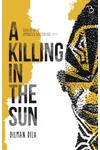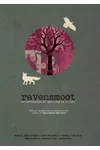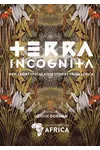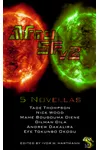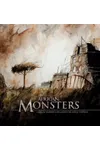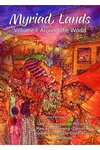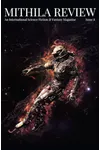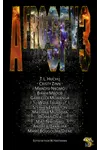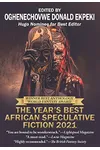Picture a Ugandan storyteller who spins tales where ghosts haunt weddings and aliens roam African villages—meet Dilman Dila! This award-winning author and filmmaker has carved a unique niche in speculative fiction, blending African folklore with sci-fi and horror. From his celebrated short story collection A Killing in the Sun to his acclaimed film The Felistas Fable, Dila’s work pulses with cultural richness and imaginative flair.
Born in Tororo, Uganda, Dila’s storytelling is rooted in the vibrant diversity of his upbringing, crafting narratives that resonate globally while staying deeply African. His ability to weave profound human truths into fantastical settings has made him a standout voice in African speculative fiction.
The Making of Dilman Dila
Dilman Dila was born on December 31, 1977, in Tororo, Uganda, growing up on Bazaar Street—a cultural melting pot that shaped his narrative voice. Surrounded by stories from diverse tribes and nationalities, he began writing at 15, inspired by the folktales his parents and peers shared. After earning a BA in Social Sciences from Makerere University, Dila worked with human rights organizations, experiences that fueled his socially conscious storytelling. His early works appeared in The Sunday Vision in 2001, marking the start of a prolific career.
A self-taught filmmaker, Dila honed his craft through the Maisha Film Lab, learning from Bollywood and Hollywood mentors. His time in Nepal, creating documentaries like Untouchable Love, further sharpened his ability to tell stories that bridge cultures and genres.
Dilman Dila’s Unforgettable Stories
Dila’s writing is a vibrant tapestry of speculative fiction, blending horror, sci-fi, and fantasy with African cultural insights. His collection A Killing in the Sun (2014) is a standout, featuring stories like the titular tale, a ghost story shortlisted for the 2013 Commonwealth Short Story Prize. It explores futuristic Africa, haunted villages, and corporate greed, drawing from Uganda’s oral traditions.
His novellas, Cranes Crest at Sunset (2013) and The Terminal Move, showcase his range. The former is a romantic tale of a Nepali immigrant and a Ugandan herdsman, while the latter follows a tribe’s perilous journey, infused with fable-like storytelling. Dila’s films, like The Felistas Fable (2013), which won four awards at the 2014 Uganda Film Festival, and What Happened in Room 13 (2007), a YouTube hit with over seven million views, blend humor and social commentary with speculative elements.
Dila’s style is both accessible and profound, using fantastical settings to explore identity, colonialism, and human resilience. His stories often feature marginalized voices, reflecting his activist roots and making his work universally relatable yet distinctly African.
Why Dilman Dila Matters
Dilman Dila’s impact lies in his pioneering role in African speculative fiction, a genre historically underrepresented. By rooting his stories in Uganda’s oral traditions and urban legends, he’s expanded the global perception of African literature, showing it can be fantastical yet grounded. His films and stories amplify marginalized voices, sparking conversations about culture, technology, and humanity.
Recognized with nominations like the Nommo Awards and BBC Radio Playwriting Competition, Dila’s work inspires new generations of African writers and filmmakers. His ability to bridge literary and cinematic storytelling makes him a cultural trailblazer, proving African narratives can captivate the world.
About Dilman Dila
- Born: December 31, 1977, in Tororo, Uganda
- Key Works: A Killing in the Sun, The Felistas Fable, Cranes Crest at Sunset
- Awards: Four Uganda Film Festival Awards (2014), Commonwealth Short Story Prize shortlist (2013)
- Fun Fact: His short film What Happened in Room 13 has over seven million YouTube views!
Snag A Killing in the Sun and dive into Dilman Dila’s spellbinding world of African speculative fiction!
